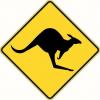After some continued frustration with being (relatively) new to vintage smoothers, I just bought a LV Bevel up Smoother. I'd been considering it for a while now after some setbacks with a couple of older smoothers. I've read quite a bit on this site (and others) concerning the opinions and details on this plane and am excited to say the least.
I currently have 2 smoothing planes (have some other sized planes that I'm pretty happy with.) One is an English made "WS" brand A4 (no 4 1/2 size) I got from eBay a year or so ago that I've never really been able to dial in quite like I want. The other is a type 11? Stanley no. 4 that I got from the tool store above Roy Underhill's school, of all places. I test drove it in the shop and it seemed decent, but I didn't look it over as well as I should have and have since realized that the toe area of the sole is quite worn (slightly rounded away) and results in a sole that will take considerable time and effort of properly flatten. The chip breaker needs some refurbishing as well. The plane was performing ok, but not quite as well as I was expecting and I could tell the iron needed some honing and slight cambering. After flattening, sharpening, and honing the iron combined with attempting to "hone" the edge of the chip breaker for better mating to the iron, I have made it quite worse and have some a notable gap going on where the 2 meet on the last 1/3rd of one side. Now shavings immediately clog in the gap and I am back to the drawing board to work it until it mates properly. I realize that this type of fiddling and refurb is par for the course with used/vintage planes. At the moment, unlike some of you fine fellows, I don't quite have the patience, tooling and time to start from scratch with a smoothing plane just to make decent shavings.
Thus, with great satisfaction and hard earned $, the order from Lee Valley was placed. I'm looking forward to a little bit more of a plug and play experience than I have ever had with hand tools thus far. I have collected and refurbished quite a few old framing chisels, which is a simpler and less daunting task for me than plane refurbing. I do look forward to taking my time with getting the no. 4 in good shape and fine tuning it, but in the meantime
I welcome any feedback specific to the no. 4 refurb. Though I have read a good deal about this subject, my practical application skills and experience is limited in this arena. Advice and how to fix the chip breaker issue would likely be a good starting point. I'm a little more confident on the sole flattening approach...I am just hesitant because I know how long it may take to get it to the level of flatness that is needed for a good smoother.
Thanks for listening!





 Reply With Quote
Reply With Quote





